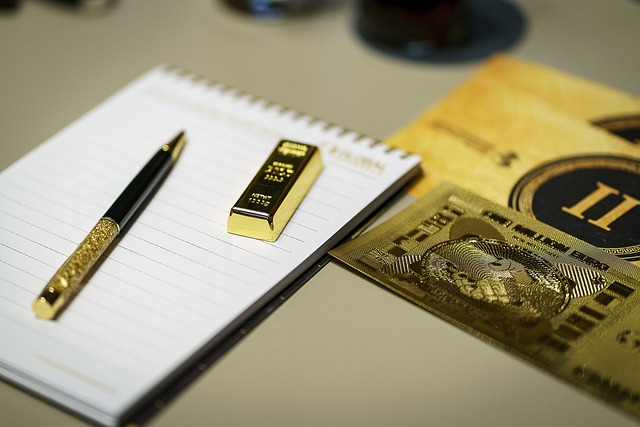
Legacy precious metals serve as a stable investment form that preserves wealth over time and acts as a hedge against market volatility and inflation. Unlike paper assets, these metals maintain value independently of economic conditions or stock market trends. Historically, gold, silver, platinum, and palladium have been reliable for retaining and potentially increasing purchasing power. Investing in legacy precious metals can diversify a portfolio, reducing risk due to their low correlation with other asset classes. When considering this investment, it's important to scrutinize associated fees, which are charged by custodians or storage facilities and can impact potential returns. To optimize portfolio stability and performance, investors should select a reputable provider with competitive legacy precious metals fees.
These metals also play a crucial role in estate planning due to their durable value and historical prestige. They offer protection against inflation and economic instability by preserving the real value of an individual's financial legacy. Ensuring effective management of legacy precious metals fees, storage solutions, and custodial oversight is vital for maintaining their value from purchase to inheritance. Consulting with financial advisors and precious metals specialists is essential for navigating the complexities of these assets.
Legacy precious metals offer significant tax benefits, classified by the IRS as collectibles subject to a 28% capital gains tax rate, which is lower than the highest ordinary income tax rate for higher-income earners. This can enable investors to manage their capital gains taxes more effectively. Their historical stability and potential for tax optimization make them a valuable addition to a diversified investment portfolio, particularly for those concerned with wealth preservation over generations and efficient intergenerational asset transfer.
Incorporating legacy precious metals into an estate plan necessitates careful evaluation of their types and market value. This is crucial for managing the associated fees, which encompass storage, insurance, and administrative costs. Strategies like setting up a trust or designating a direct beneficiary can facilitate a smoother transfer of assets posthumously, potentially avoiding probate. Collaboration with legal and financial experts specializing in legacy precious metals is key to navigating these fees and ensuring that your estate plan benefits your heirs as intended. By taking a proactive approach with professional guidance, you can secure the preservation of your legacy through these valuable assets.
Legacy precious metals have long been a cornerstone of wealth preservation and estate planning, offering enduring value and strategic advantages for generations. This comprehensive guide delves into the multifaceted benefits of incorporating these tangible assets into your legacy plan. From understanding their role to navigating tax incentives, managing associated fees, and integrating them into your estate strategy, each section elucidates the pivotal role precious metals can play in securing your financial legacy. Explore how legacy precious metals can be a sound investment, providing both stability and prosperity for your heirs.
- Understanding Legacy Precious Metals and Their Role in Wealth Preservation
- The Enduring Value of Gold, Silver, and Other Precious Metals in Legacy Planning
- Exploring the Tax Advantages of Investing in Legacy Precious Metals
- Managing Fees Associated with Legacy Precious Metals Holdings
- Strategies for Including Legacy Precious Metals in Your Estate Plan
Understanding Legacy Precious Metals and Their Role in Wealth Preservation

Legacy precious metals represent a tangible form of wealth preservation, offering investors a hedge against market volatility and inflation. Unlike paper assets that can be subject to the whims of economic fluctuations, these metals maintain intrinsic value that is independent of currency fluctuations or stock market performance. Investing in legacy precious metals like gold, silver, platinum, and palladium has historically served as a reliable store of value, with the ability to protect and potentially enhance purchasing power over time.
The role of legacy precious metals in wealth preservation is multifaceted. They provide a diversification strategy that can reduce overall portfolio risk. Additionally, these assets often have low correlation with other investment classes, which can contribute to a more stable financial portfolio. Legacy precious metals fees must be considered when evaluating the potential returns of such investments. Management and storage fees vary depending on the custodian or storage facility used, so it’s crucial for investors to understand these costs upfront. By carefully selecting a reputable provider with competitive legacy precious metals fees, investors can minimize expenses and maximize the benefits of adding these timeless assets to their investment strategy.
The Enduring Value of Gold, Silver, and Other Precious Metals in Legacy Planning

Precious metals have long been a cornerstone in legacy planning due to their enduring value and historical regard as stores of wealth. Gold, silver, and other precious metals are often included in estate portfolios for their ability to maintain value across generations. These metals serve as a hedge against inflation and economic uncertainty, providing a financial buffer that can safeguard the purchasing power of an individual’s wealth. In times of economic volatility, the intrinsic value of these metals tends to hold steady or even appreciate, which can be advantageous for maintaining the real value of a legacy. Moreover, incorporating legacy precious metals into one’s estate plan involves careful consideration of associated fees and storage arrangements to ensure that the assets are managed effectively and cost-efficiently over time. The choice of a custodian and the handling of ongoing maintenance fees and storage costs are critical factors that can influence both the immediate and long-term viability of these assets as part of one’s legacy. It is imperative to engage with reputable financial advisors and precious metals experts who can guide you through the process, from acquisition to eventual transfer, ensuring that the integration of these metals into your legacy plan is both strategic and secure.
Exploring the Tax Advantages of Investing in Legacy Precious Metals

Legacy precious metals offer a unique investment opportunity with significant tax advantages that can be leveraged by savvy investors. Unlike traditional investment vehicles, precious metals such as gold, silver, platinum, and palladium are considered tangible assets, which means they are not subject to the same stringent reporting requirements as stocks or bonds. This reduction in paperwork translates to fewer fees associated with the holding and transaction of these metals, a point that underscores the appeal of legacy precious metals fees for those looking to minimize their tax liabilities.
Moreover, when it comes to capital gains taxes, the IRS treats precious metals as collectibles. This classification means that they are subject to a long-term capital gains tax rate of 28%, which is lower than the maximum ordinary income tax rate for higher earners. Investors can benefit from this preferential treatment by strategically timing their purchases and sales, effectively managing their tax burden over time. The tax advantages coupled with the historical stability of precious metals make them an attractive addition to a diversified investment portfolio, especially for those interested in legacy wealth preservation and intergenerational asset transfer.
Managing Fees Associated with Legacy Precious Metals Holdings

When incorporating legacy precious metals into your investment portfolio, it’s crucial to be cognizant of the associated fees that can impact your returns. Legacy precious metals fees encompass various costs, including storage charges, transaction fees, and premiums over the spot price for purchasing these assets. To efficiently manage these expenses, investors should first understand each fee type. Storage fees, for instance, vary by custodian and are often a fixed annual rate or a percentage of the value held. These charges compensate for the security and insurance required to safeguard your physical assets. Transaction fees, on the other hand, arise when buying or selling precious metals and can be fixed or based on market conditions. It’s imperative to compare these costs across different dealers to optimize your investment. Premiums are the difference between the spot price of the metal and the purchase price, which includes the dealer’s profit margin. While higher premiums might be necessary for rare or collectible items, they can erode long-term returns if not carefully considered. By diligently tracking and minimizing these legacy precious metals fees, investors can preserve more of their capital and enhance the potential benefits of including precious metals in their financial strategy.
Strategies for Including Legacy Precious Metals in Your Estate Plan

When integrating legacy precious metals into your estate plan, it’s crucial to consider the various strategies that can align with your financial goals and the desires for your estate after you pass away. One of the initial steps is to assess the types of precious metals you own and their current market value. This will help determine how these assets fit within the broader context of your estate and what provisions need to be made in terms of legacy precious metals fees, which can encompass storage, insurance, and administrative costs associated with holding such assets.
Once you have a clear understanding of the value and nature of your precious metal holdings, you can explore different strategies for inclusion in your estate plan. A common approach is to establish a trust specifically designed to hold these assets. This trust can dictate how the metals are to be distributed upon your passing, ensuring that your beneficiaries receive them according to your wishes without the complication of probate. Another strategy involves naming a beneficiary directly on the account holding the precious metals, which allows for a smooth transfer to the designated individual. In both cases, it’s essential to work closely with legal and financial professionals who are adept at managing assets like legacy precious metals. They can guide you through the nuances of legacy precious metals fees and help structure your plan in a way that minimizes costs and maximizes benefits for your heirs. By taking a proactive approach, you can ensure that your legacy is preserved and your beneficiaries are provided for in accordance with your intentions.
Navigating the world of wealth preservation and legacy planning can be complex, yet incorporating legacy precious metals into your financial strategy offers a time-tested approach with significant benefits. This guide has elucidated the enduring value of gold, silver, and their counterparts in safeguarding wealth across generations. It has also highlighted the tax advantages these assets can provide, which are a boon to estate planning. Importantly, it shed light on managing fees associated with holding legacy precious metals, ensuring that investors can secure their financial future without unnecessary financial erosion. By integrating these commodities into your estate plan through strategic allocation and storage considerations, you can fortify your legacy against the uncertainties of economic fluctuations. Legacy precious metals stand as a steadfast component of a well-rounded financial portfolio, offering both tangible security and intangible peace of mind.







